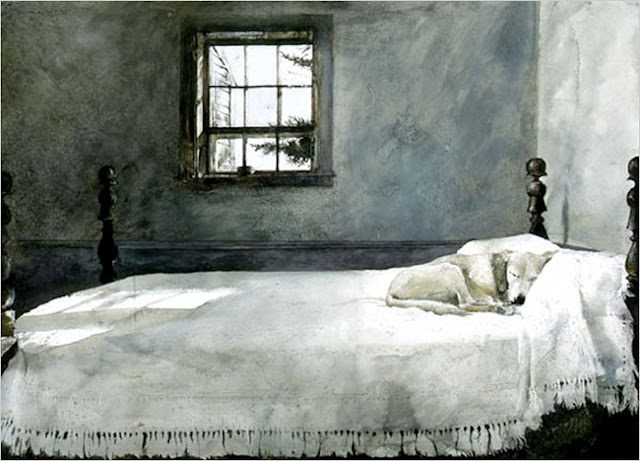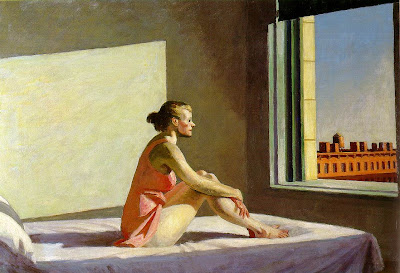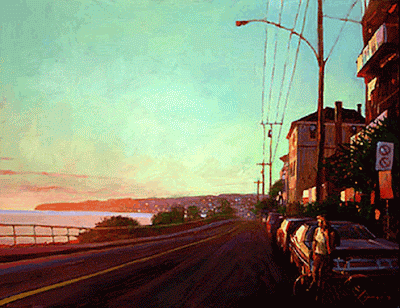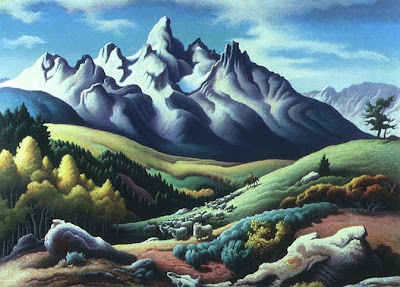Andrew Newell Wyeth (1917 – 2009) was part of the Regionalist movement and is most well known for his painting of Christina’s World, one of the best-known American paintings of the mid 20th century. In 1963, Wyeth was the first painter to receive the Presidential Medal of Freedom Award and at the age of 91 in 2007, he received the National Medal of Arts from George W. Bush.

(Wyeth, Andrew. Christina’s World. c. 1948. tempera on gessoed panel. Metropolitan Museum of Art, New York. ©)
Christina’s World depicts a young girl lying on the ground in an open field, looking up and crawling towards a grey house on the horizon. The girl was Andrew Wyeth’s neighbor, Christina Olson. She suffered from polio and had lost the use of her legs. Wyeth paints her painfully pulling herself up the hillside with her arms. The painting was purchased by the New York Metropolitan Museum of Art in 1948 and its opening, brought in record-breaking attendance.

(Wyeth, Andrew. Dodges Ridge. c. 1947. tempera on gessoed panel. Smithsonian American Art Museum.)
Wyeth says, “She was limited physically but by no means spiritually. The challenge was to do justice to her extraordinary conquest of a life which most people would consider hopeless.”

(Wyeth, Andrew. The Master’s Bedroom. c. 1965. watercolor. Andrew Wyeth Private Collection.)
Andrew’s father, Newell Convers Wyeth, also known as N.C. was one of the most famous and highest-paid illustrators in the United States in the early 20th century. He illustrated popular books such as Treasure Island, Robinson Crusoe, The Last of the Mohicans, and Robin Hood. Although Andrew had already mastered watercolor when he was about twelve years old, N.C. chose to tutor him extensively in art.

(Wyeth, Andrew. Winter. c. 1946. tempera on board. North Carolina Museum of Art.)
In 1945, Andrew’s life was forever changed after the tragic death of his father and nephew, who were both killed in a car accident at a railway crossing near his home in Chadds Ford. Andrew later describes that everything after that was different as though “his eyes were opened”.

(Wyeth, Andrew. Groundhog Day. c. 1959. tempera on masonite. Philadelphia Museum of Art.)
Wyeth painted with egg tempera, which is created from an egg yolk mixed with pigment. It is a unique medium to be used in the 20th century as its popularity declined after the invention of oil paint. Once mixed it cannot be stored and it dries rapidly but, it does allow for great precision and Andrew used this to his advantage as he worked countless hours to paint individual strains of hair and individual blades of grass in Christina's World.

(Wyeth, Andrew. Braids. c. 1979. dry-brush watercolor. Private Collection.)
Wyeth’s paintings of open plains lacking vegetation, weathered buildings, and subjects of people in solitude seem to create a cold wintery feel and his work is much appreciated here!
Enjoy! :)
References





















